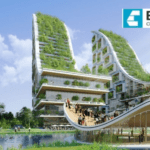The Evolution of Structural Design: Past, Present, and Future Perspectives
Structural design, the art and science of creating frameworks that bear the weight of buildings and bridges while emphasizing functionality and aesthetics, has evolved dramatically over time. The journey of structural design from ancient marvels to modern engineering feats and its future trajectory reflects not just technological advancements but also the changing needs, aspirations, and innovation within the field.
Past Perspectives: Foundation of Ingenuity
Ancient civilizations laid the groundwork for structural design, showcasing astounding achievements that still stand as testaments to human ingenuity. From the awe-inspiring pyramids of Egypt to the intricate arches and domes of Roman architecture, these structures embodied a blend of innovation, mathematics, and craftsmanship.
The masterful use of stone, brick, and mortar characterized the structural engineering of antiquity. Arch and vault systems, like those in the Colosseum, demonstrated an understanding of load-bearing principles that supported immense structures, enabling the construction of grand monuments and architectural wonders that stood the test of time.
Present Perspectives: Technological Advancements and Innovation
The present era witnesses a transformative phase in structural design, driven by technological advancements, material sciences, and computational modeling. Innovations in materials such as steel, reinforced concrete, and composite materials have revolutionized the way structures are conceived and constructed.
Building Information Modeling (BIM), a digital modeling tool, has emerged as a game-changer in the design and construction industry. It enables multidisciplinary collaboration, facilitates clash detection, and streamlines the construction process by visualizing structures in a 3D environment, optimizing efficiency, and minimizing errors.
Moreover, the advent of parametric design and computational analysis has empowered architects and engineers to explore complex geometries and structural forms that were previously unattainable. From curvilinear skyscrapers to intricate lattice structures, the possibilities for architectural expression have expanded exponentially.
Sustainability has also become a pivotal aspect of contemporary structural design. Engineers and architects now integrate sustainable practices, designing structures that minimize environmental impact, optimize energy consumption, and embrace eco-friendly materials.
Future Perspectives: Innovation and Beyond
Looking ahead, the future of structural design promises to be even more transformative. Advancements in technology, such as robotics, nanotechnology, and 3D printing, are poised to revolutionize the industry.
Robotics in construction offer the potential for automated assembly, reducing labor-intensive tasks and enabling the creation of complex structures with precision and efficiency. Nanotechnology, with its focus on innovative materials, could introduce self-healing concrete, smart materials, and nano-composites that enhance structural resilience and longevity.
Additionally, 3D printing holds immense promise in revolutionizing construction methodologies. The ability to print entire building components on-site or off-site using various materials could streamline construction processes, reduce waste, and facilitate architectural experimentation.
The future of structural design also aligns with the principles of biomimicry, drawing inspiration from nature’s designs to create structures that are not only functional but also integrate seamlessly with their environment.
In conclusion, the evolution of structural design from ancient wonders to contemporary innovations and future prospects reflects a trajectory of continuous innovation, technological advancements, and a commitment to meeting evolving societal and environmental needs. As structural engineering continues to evolve, the fusion of technology, sustainability, and innovative design will shape the architectural landscape, ushering in an era of transformative structures that redefine possibilities and set new standards for human achievement.






